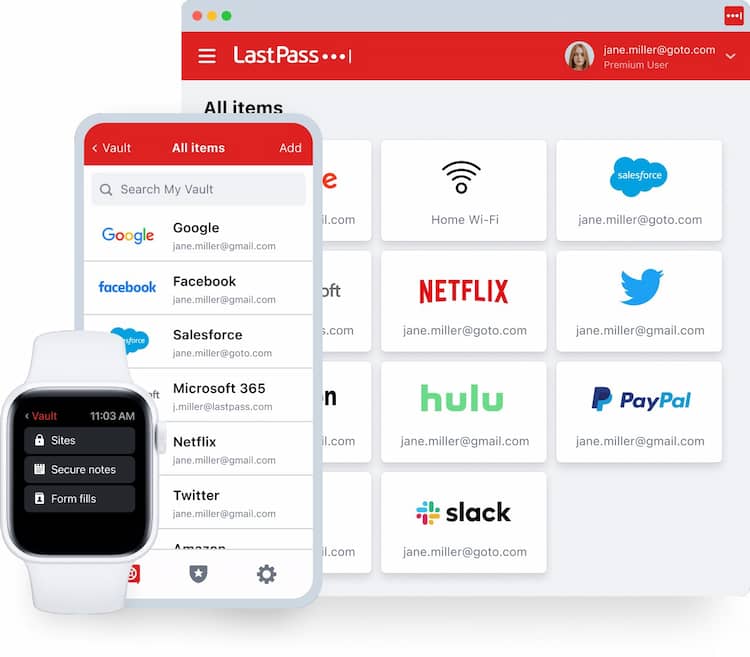


Article by Newsletter Editorial Board
Posted December 2022Are you good at passwords? I used to think so until finally being completely overwhelmed. Time to consider using a password manager!
You likely already use a basic password manager to capture your username and password — usually via a browser plugin—when you log in to a website, and then automatically fill in your credentials when you return to that site. The site stores all of your passwords in an encrypted database, often referred to as a “vault,” which you protect with a single master password.
While your web browser probably offers password management features, does it work across all your devices on all your accounts? (If so, and it’s free, let me know and I’ll switch today).
The best password managers relieve you of the burden of having to create and memorize unique, complex logins on your own, protect your passwords by encrypting your login information in a virtual vault — either locally or in the cloud — and only allowing access with a single master password.
In this day and age of technology, you can make your life easier. Here are the essential features that PC World and others say you should look for:
Password generation: The strongest passwords are long, random strings of characters, and you should use a different one for each site you access. That’s what makes password generation — the ability to create complex passwords out of letters, numbers, and special characters — an indispensable feature of any good password manager. The best password managers will also be able to analyze your existing passwords for weaknesses and upgrade them with a click.
Autofill and auto-login: Most password managers can autofill your login credentials whenever you visit a site and even log you in automatically. Thus, the master password is the only one you ever have to enter. However, browser autofill can be a security concern, so the best managers will also let you toggle off this feature if you feel the risk outweighs the convenience.
Secure sharing: You should be able to share a password with a family member or coworker without compromising your security.
Two-factor authentication: Password managers which support multi-factor authentication — using a second method such as a PIN, a fingerprint, or another trusted device for additional verification — are a desirable feature to minimize the risk of hacking.
Protection for other personal data: Credit card and bank account numbers, addresses, and other personal data can be securely stored in many password managers and available to autofill into web forms.
Given the foregoing, which password managers are worth considering? Here are several, ranging in cost from free to paid tiers.

LastPass (lastpass.com), which has both free and paid versions, covers the list pretty well. It can create unique, complex passwords; capture and manage login credentials; synchronize passwords across multiple devices; and share them with others you trust. Its password auditing and updating features help you identify and eliminate weak or duplicate passwords. It also stores credit card numbers and other personal data to autofill web forms. LastPass supports a range of multi-factor authentication options for protecting your vault.
Dashlane (dashlane.com) is another good paid choice. It features a security dashboard that grades your passwords and suggests actions for boosting your protection. It’s free for a single device, but to synchronize across multiple devices you’ll need a paid plan:
Keeper Password Manager & Digital Vault (keepersecurity.com) offers features such as multi-factor authentication support, extensive sharing capabilities, useful auditing tools, and full password histories. While security-minded users stand to get the most out of Keeper’s set of robust features, even the everyday user will be safer for using it.
While most password managers require a master password to access your password vault, LogMeOnce (logmeonce.com) offers options of a PIN, biometric, or photo login for program access. Other than this distinctive feature, LogMeOnce operates like the others It allows you to store and synchronize passwords and credit cards with additional features such as dark-web and cyberthreat monitoring, all of which comes at a price varying with the number of options you choose.
Finally, Bitwarden (bitwarden.com) offers a robust free plan. While it may lack some of the advanced features offered by the paid services and its no-frills interface isn’t the most user friendly, you can’t argue against Bitwarden’s price — it allows you to upgrade your security for free after all. It also offers very affordable paid tiers with more advanced features, but its free tier includes so much that you might not need anything else.
Questions or comments? Drop me an email: jwh3@mindspring.com